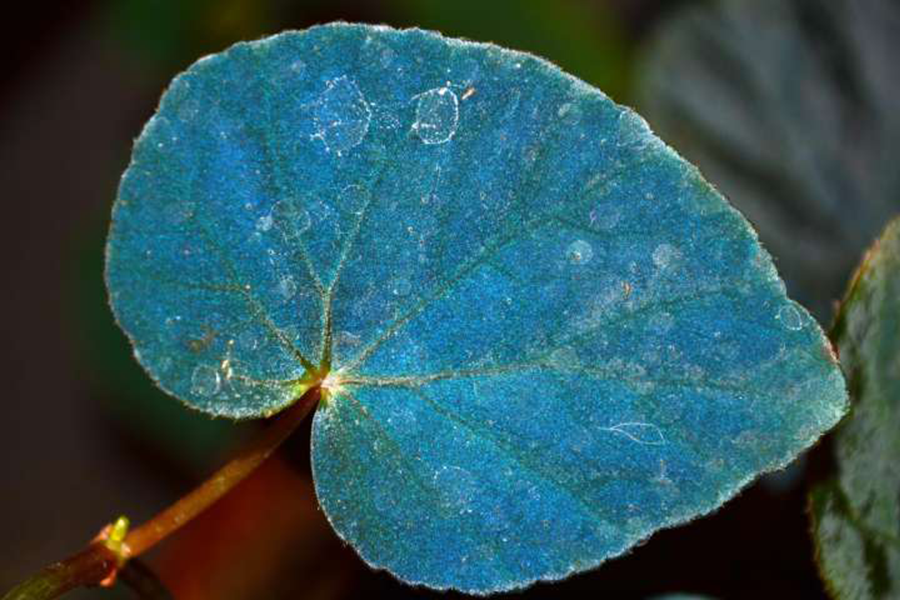Why the peacock begonia has beautiful blue leaves
Loading...
For most of the world, green is the color of life. Green shoots push up through the ground each spring after the last frost, and trees send out green leaf buds. Yet in the rainforests of Southeast Asia, one plant is changing that image.
The Begonia pavonina, or peacock begonia, dwells on poorly lit forest floors, where it has adapted to its environment by developing huge, beautiful blue leaves. How did this little plant get such unusual leaves?
“We discovered under the microscope, individual chloroplasts in these leaves reflected blue light brightly, almost like a mirror,” said Matt Jacobs, University of Bristol PhD student and an author of a newly released study on the begonia, in a university press release.
Begonias have long been known as adaptable plants. Some other begonias even have blue tinted leaves. But this study, published in the journal Nature Plants by a team of researchers at the Universities of Bristol and Essex in Britain, is the first to examine the biological function of the beautiful blue begonia’s leaves.
Most plants are green because of a biomolecule called chlorophyll, a substance you probably remember from elementary school science classes. The majority of plants make their energy from chloroplasts filled with chlorophyll – chloroplasts absorb light and convert it into energy, tinting their healthy leaves green.
Like most plants, peacock begonias also rely on chlorophyll to gather light and create energy. The dim, filtered light of the forest floors where the blue begonias live, however, means that they need a special, more efficient way of filtering light to gather the most energy from a more limited resource.
Enter iridoplasts. Like chloroplasts, researchers found that peacock begonias contain iridoplasts which perform photosynthesis. Yet they contain a key difference – unlike chloroplasts, iridoplasts are layered like stacks of pancakes within peacock begonia leaves, creating a shiny oil-sheen effect on the leaf’s surface, The Washington Post explains.
“We found a striking difference between the 'blue' chloroplasts found in the begonias, also known as 'iridoplasts' due to their brilliant blue iridescent colouration, and those found in other plants,” said Mr. Jacobs in a statement. “The inner structure had arranged itself into extremely uniform layers just a few 100 nanometres in thickness, or a 1,000th the width of human hair."
In some ways, researchers say, the stacked structure even reminds them of miniature lasers or other light control structures.
The iridoplasts’ layered structure allows them to capture the wavelengths of light that make it to the forest floor, red and green. Researchers believe that the layered structure also causes slower and more efficient light gathering.
The study’s authors say that peacock begonias are living proof of plants’ ancient ability to adapt to different environments. Some of Earth’s ancient plants, they say, developed a purple photosynthetic chemical that allowed them to capture the light available at that time.
“The light that is passing through gets slightly bent — it's called interference,” said co-author Heather Whitney, according to The Washington Post. “So you have this sort of iridescent shimmer.”








